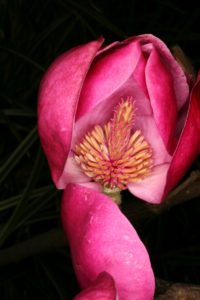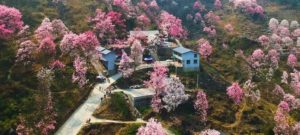Herbal Legends X:
___________________________

A long time ago a man named Qin Juren lived with a very uncomfortable illness. For many years a foul-smelling purulent secretion oozed out from his nose, while he felt very unnerving pressure in his forehead, as well as dizziness and drowsiness. Those symptoms caused him to smell badly to the point that even his wife and his children withdrew from him. Qin Juren had visited all the doctors in the vicinity, but none of them was able to help him. His worry over his suffering, loneliness and isolation grew into the infinite and one day he grabbed a rope, went to the forest and wanted to hang himself on a tree. At that moment a woodcutter came along the way and mercifully took the time to talk to Qin Juren. Qin Juren told him about the story of his suffering and the woodcutter rejoined:
Even small, insignificant insects like crickets and ants try to stay alive in any possible way. Considering your great talents and abilities, it would be a pity, if you were dangling from a branch with a pale face. If the local physicians here cannot help you, then you should look for help beyond the borders. I have heard that the people of Yi [夷] have a good remedy for symptoms such as yours.
Therefore, Qin Juren made his way to the Yi people and indeed found a doctor who could heal his suffering within one month. The physician utilized the fluffy bud of a flower which resembled the tip of a  calligraphy brush. When Qin Juren had made a full recovery and was able to return back home, he collected a handful of the seeds of the tree, which the flowers grew on and sowed them behind his house.
calligraphy brush. When Qin Juren had made a full recovery and was able to return back home, he collected a handful of the seeds of the tree, which the flowers grew on and sowed them behind his house.
After a few years the small trees had already developed and sprung forth those wonderful and miraculous buds at the beginning of each year . Whoever had problems related to the nose, sought out Qin Jure to be treated with this remedy. Someone asked about the name of the herb, however, Qin Juren himself did not know it. He only remembered that he received it in a Xin-Hai [1] [辛亥]-year from a doctor of the Yi [夷] people. That is why he named the healing remedy Xin Yi [辛夷]- Magnolia biondii [2].
[1] In China years are historically counted in a sexagenary cycle consisting of Ten Heavenly Stems [天干] and Twelve Earthly Branches [di zhi 地支]. The also play an important role in astrology and Feng Shui, as well as in certain acupuncture methods such as the Eightfold Method of the Divine Turtle [ling gui ba fa 靈龟八法].
[2] There is another method of brewing 15 grams of Xin Yi with three eggs. The eggs are to be eaten once boiled and the decoction to be drunk, which allegedly is extremely efficacious for sinusitis.
Post-Scriptum: This story is originally found in Andreas Kalg’s book Chinesische Arzneipflanzen by Elsevier.
If you enjoyed reading this please consider supporting us!
When we started the Purple Cloud Institute, our aim was to make accessible educational material about traditional Chinese cultural practices. We strive to keep prices of our books as affordable as possible and the content we provide free of charge. However, there are many ongoing behind the scenes costs and the time taken to provide such content is considerable.
If you have enjoyed our offerings please consider donating and supporting us. The help will allow us to make time to bring you more in the way of book publications, podcasts and videos about tradition-based Daoist, Chinese medicine and martial arts and help keep these traditions alive.
Your assistance is greatly appreciated!
